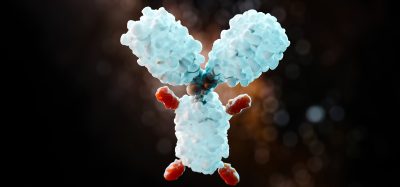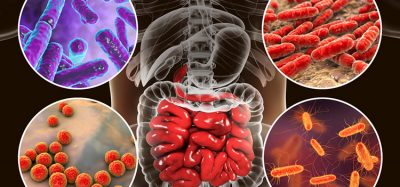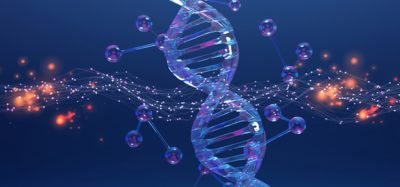Novel antimicrobial molecules derived from wasp venom
Posted: 13 October 2020 | Hannah Balfour (Drug Target Review) | No comments yet
Altering the mastoparan-L (mast-L) peptide found in Vespula lewisii wasp venom, researchers created several novel antimicrobial molecules.
![Wasp on a wooden platform [Credit: University of Pennsylvania].](https://www.drugtargetreview.com/wp-content/uploads/Vespula-lewisii-wasp-750x500.jpg)
[Credit: University of Pennsylvania].
Scientists have engineered proteins found in the venom of the Vespula lewisii (Korean yellow-jacket wasp) to create potent antimicrobial molecules. The team hopes to develop the molecules into novel antibiotic drugs that could overcome antimicrobial resistance.
The team, led by Perelman School of Medicine scientists at the University of Pennsylvania (Penn), US, altered a highly toxic small protein from the Korean yellow-jacket wasp, enhancing its ability to kill bacterial cells while reducing its ability to harm human cells. In experiments with animal models, the researchers demonstrated that their family of novel antimicrobial molecules could protect mice from lethal bacterial infections.
The emergence of antimicrobial resistance means there is an urgent need for new treatments for bacterial infections. The US Centers for Disease Control and Prevention (CDC) suggests that each year roughly three million Americans are infected with antibiotic-resistant microbes and more than 35,000 die as a result. Globally the problem is even worse: sepsis, an often-fatal inflammatory syndrome triggered by extensive bacterial infection, is thought to have accounted for about 20 percent of global deaths in 2017.
“New antibiotics are urgently needed to treat the ever-increasing number of drug-resistant infections, and venoms are an untapped source of novel potential drugs. We think that venom-derived molecules such as the ones we engineered in this study are going to be a valuable source of new antibiotics,” said study senior author Dr César de la Fuente, a Presidential Assistant Professor in Psychiatry, Microbiology and Bioengineering at Penn.
The researchers started with a peptide called mastoparan-L (mast-L), a key ingredient in the venom of Vespula lewisii wasps. Mast-L-containing venom is quite toxic, despite not being too dangerous to humans in the small doses delivered by wasp stings. It destroys red blood cells and triggers a type of allergic/inflammatory reaction that can cause potentially fatal anaphylaxis.
Mast-L is known for its moderate toxicity to bacterial species, making it a potential starting point for engineering new antibiotics. But how to enhance its anti-bacterial properties and make it safe for humans was unknown.
The team searched a database of hundreds of known antimicrobial peptides and identified a small region, the pentapeptide motif, that is associated with strong antibacterial activity. The researchers replaced a section of mast-L, that they believed to be the chief source of toxicity to human cells, with this motif to create a compound called mast-MO.
They then tested mast-MO in mice, administering the compound several hours after infecting them with otherwise lethal, sepsis-inducing strains of the bacteria Escherichia coli or Staphylococcus aureus. In each experiment the antimicrobial peptide kept 80 percent of treated mice alive, with no evidence of toxicity even at higher doses. On the other hand, mice treated with mast-L were less likely to survive and showed severe toxic side-effects when treated with higher doses.
According to the researchers, the potency of mast-MO in their experiments appeared to be comparable to existing antibiotics gentamicin and imipenem – for which alternatives are needed due to the spread of resistant bacterial strains.
De la Fuente and his colleagues found evidence in the study that mast-MO kills bacterial cells by making their outer membranes more porous and by summoning antimicrobial white blood cells. The former could improve the ability of co-administered antibiotics to penetrate the cells. The researchers also stated there was evidence that mast-MO tamped down the immune-overreaction that can cause severe disease in some bacterial infections.
The researchers said they created dozens of variants of mast-MO and found several that appeared to have significantly enhanced antimicrobial potency with no toxicity to human cells. They hope to develop one or more of these molecules into new antibiotics and also expect to take a similar approach to develop future promising antibiotic candidates.
“The principles and approaches we used in this study can be applied more broadly to better understand the antimicrobial and immune-modulating properties of peptide molecules and to harness that understanding to make valuable new treatments,” de la Fuente concluded.
The study was published in the PNAS.
Related topics
Antibiotics, Antimicrobials, Bioengineering, Drug Development, Drug Discovery, Drug Leads, In Vivo, Protein, Proteomics, Therapeutics
Related conditions
Anaphylaxis, antibiotic resistance, bacterial infections, Sepsis
Related organisations
Perelman School of Medicine at the University of Pennsylvania
Related people
Dr Cesar de la Fuente-Nunez







